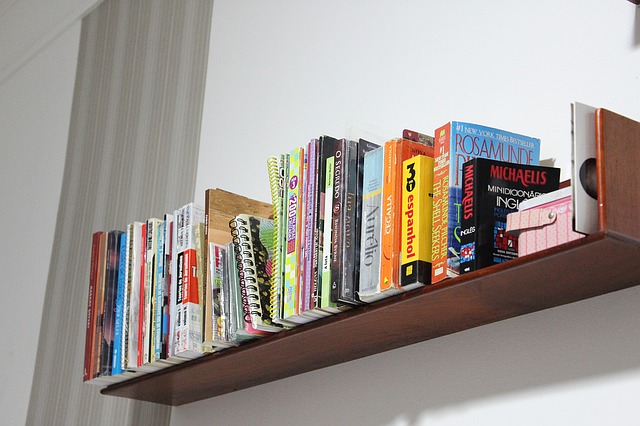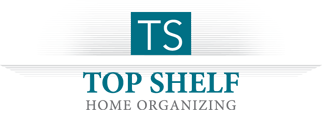Organizing your library is fun when you select an organizing method that fits your personality and needs. There are two main methods for organizing books: by visual appeal and by topic. Which method you select will depend on a few things. Who accesses the books? Are you the only person who uses the books? Do you loan books to friends and family? Do your household members store and access the books as well? Are you a visual person or more of a systematic person? Consider these things when you determine how you want to organize your books.

Visual
Organizing your books visually is a great way to organize your books if you recall your books by color and design of the spine. This is also a great method if you are looking to display your books versus reference your books. Visual organization includes organizing by color, size, orientation and cover type. You may choose to use a combination of visual methods in your library. Additionally, sorting books by hard cover versus paperback, and then by color, is an option for combining different visual strategies.
- Color
- You may select this method for its visual appeal and allowance for creativity. Creating a rainbow array or color block pattern may be your desire.
- Size
Aligning your books by height might create an interesting visual appeal for your collection. Organizing tall books with tall books and short books with short books will give your library a clean, structured look.
- Physical Orientation
Create visual interest when you arrange your books horizontally, vertically, or a combination of horizontal and vertical. Stacks of horizontal books can add a nice variety to your library and allow for select books to stand out from the rest. This is most practical for books that you don’t access regularly.
- Cover Type
Organizing your books by cover type is another visual method for organizing your books. Hard cover ‘heavier’ books on the bottom and paper back ‘lighter’ books toward the top of the shelf will give your library a nice structural look. This method is also great if you tend to recall your books by the spine design.
Topic
Organizing your books by topic works well when you have multiple people in your home, and when you reference your books frequently. There are many, many ways to organize by topic. I have listed some ideas below. Think about what works best for you. Combining a couple methods may be required. For example, if you want to separate books by family member and then alphabetically.
- Read vs. Have Not Read
This method is great to separate out the books you have not read yet. When you are ready to start a new book, you know right where to go. This is perfect for the person who buys a lot of books or receives a lot of books as gifts. For the books you have already read, consider keeping only the ones you have loved and plan to read and reference again. Consider donating the books that you are done with.
- Favorites
You may want to designate a special place to distinguish your favorite books. These are the books that have made a strong impact on you, and you want to display, share and admire.
- Alphabetical
If you tend to reference your books by title or author, alphabetical arrangement may work best for you. This is a great method if you have a lot of books. It is easy to find and return books as you will know right where they go.
- Owner or Family Member
If your library contains books that belong to many people, you may want to organize them by person. Place the kids books on a lower level of a shelf to make it easy for them to see, access and put away their books. If your husband still has all his college text books, those can go in his section. Each person can be responsible for their own books including how they are organized, which books they keep and which they donate.
- Subject or Genre
Arranging your books by subject or genre makes sense if you have a lot of books. This method is great when you tend to reference your books by subject. Subjects can include cookbooks, travel, history, professional resources, science fiction, educational, etc. Another simple method is to separate your books by fiction and non-fiction.
You may desire to combine two or three methods, possibly both visual and topic methods. However, before you get started physically organizing your books, make a list of the types of books you own and how you like to use them. Remember to gather all the books in your home (basement, attic, office and bedrooms) so you can see the entire collection before sorting them into categories.
Have fun organizing your books and remember to keep it simple. Donate the books you are done with that don’t bring you any joy.
If you find organizing your books to be stressful, an organizer can help you complete your library organizing. See if Top Shelf Home Organizing can help you on your journey. Contact Jayme to schedule a consult or chat about organizing.
